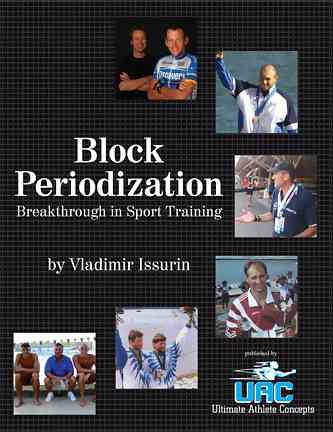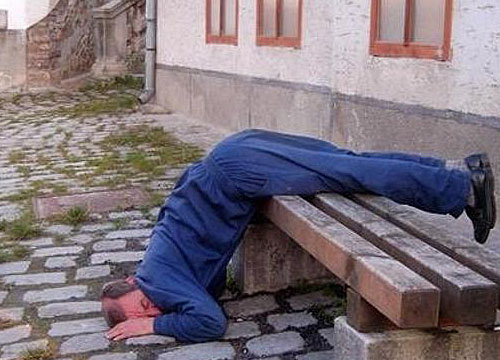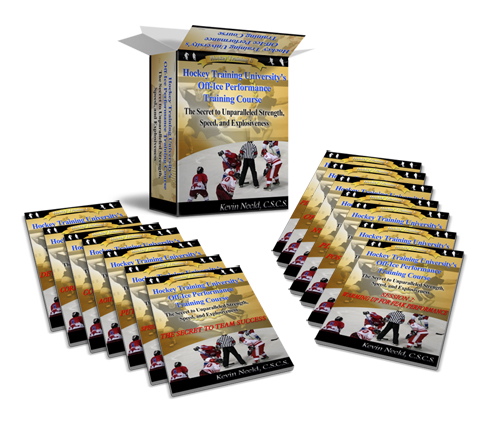At Endeavor, we really pride ourselves on constantly looking for better ways to develop our athletes. All of our coaches continuously look for cutting edge information on program design, more effective exercises, nutrition, recovery strategies, and injury prevention (amongst others). Working alongside such passionate people is what makes my job so much fun to do.

Over the weekend I spent some time watching DVDs of a 3-hour presentation from Dr. Vladimir Issurin on Block Periodization. Dr. Issurin is a scientific advisor to the Soviet and Israeli Olympic teams. His presentation delved into how to alter the emphasis of various training aspects to best peak for competition. Eastern European training methods have always intrigued me, so I was psyched I got an opportunity to hear from one of their secret weapons.

The Death of Development
One of the things he said that really caught my attention was (to paraphrase) that in today’s athletic development systems, competitive workloads have replaced training workloads. Think about it. Add up the total time athletes spend practicing and training in a given month. Add up the total time hockey players spend playing games. In previous hockey development models, a ratio of preparation: competition would likely be AT LEAST 5:1, meaning players would spend 5 hours of preparation (practice and training) for every 1 hour of competition. Now this ratio is significantly closer to 1:1, if not 1:2.
Concomitant with this shift in competition emphasis, we’ve seen a drastic increase in the amount of burnout amongst high school players and an UNACCEPTABLE increase in the number of non-contact and overuse injuries. To address the former, this means that when hockey players should be entering their best years, they’re so burnt out from 70+ game youth seasons, spring league, summer league,a nd select teams that they give it up. This is tragic.
Tissue Stress Accumulation
The increase in overuse injuries is related to what I think of as “tissue stress accumulation”. Simply, this means that the stresses placed across tissues within your body (muscle, tendon, ligament, etc.) accumulate over time, ESPECIALLY if special attention isn’t paid to recovery. When I was in San Jose, John Pallof (a brilliant physical therapist) said he thought one of the reasons groin strains, hip flexor strains and sports hernias were so much more prevalent now is because hockey players are training more than ever before. John noted that the training is absolutely necessary for the prevention of a host of other injuries, but he alluded to a great point: With the increase in competitions both within a season and across multiple seasons (Issurin) and the necessary increase in training (Pallof), our body’s just aren’t given the time to recover that they need. This reality is exemplified by the fact that almost ZERO attention is paid to recovery and improving soft-tissue quality.
Take Home Messages
There are three things you should take from this (and pass along to everyone you know and love):
1) As a hockey community, we need to ease up on the number of games (and number of seasons for that matter) and put a greater emphasis on practices with components of skill development. It’s okay to slow down practice and focus on individual skills. In fact, it’s paramount for development.
2) From a training standpoint, the goal is to get the maximum benefit from the minimum amount of training. This comes back to minimizing tissue stress accumulation and highlights the fatal flaw in the “more is better” idea. This focus underlies the design of all our athletic development programs at Endeavor. It’s why we sometimes use 2 sets instead of 3, why we tell athletes to lift lighter weights on certain sets, and why we dial back our strength work significantly when it’s time to really hammer home conditioning. Maximum results, minimum stress. That’s the goal.
3) Lastly, EVERY hockey player should be actively pursuing improved soft-tissue quality. I recently heard someone say that athletes ignoring performance-limiting factors (such as poor soft-tissue quality) are essentially driving with the brakes on. At Endeavor, we address soft-tissue quality by having our athletes go through a self-myofascial release circuit before they do their dynamic warm-up, which uses foam rollers, tennis balls, and medicine balls to break up knots and adhesions within the muscle (taking the breaks off). These implements can help restore normal muscle extensibility and fluid motion in young athletes and help maintain tissue quality in older athletes.
As athletes get older, it is ABSOLUTELY IMPERATIVE that they go see a manual therapist on a regular basis to do some soft-tissue work done on their hip musculature. In this case, manual therapists include professionals that can do massage, A.R.T. (Active Release Technique), and Graston. This is truly the secret behind long-term injury-free athletic excellence. I’ve found that most massage therapists avoid the hip musculature for liability reasons, and therefore aren’t of much use for our purposes (although the relaxation is still awesome and I’d never tell anyone not to get a massage).

Me on my walk home after a great massage.
Because not all manual therapists are created equally, I made it a mission to seek out the top professionals in our area to refer our athletes to. I generally tell our older athletes to go see one of these therapists once per month to get work done, sometimes more or less depending on the therapists recommendation. I highly recommend you find someone in your area too. It’ll be worth it in the long run.
To your success,
Kevin Neeld
Please enter your first name and email below to sign up for my FREE Athletic Development and Hockey Training Newsletter!







